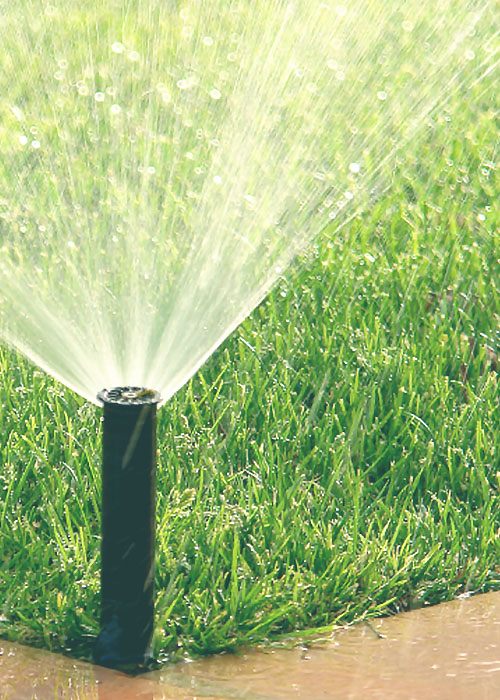
After the 2006 drought left reservoirs strained and lawns parched, TRWD got serious about water conservation.
In the years following the drought, it developed an aggressive portfolio of public education and outreach conservation programs – sprinkler system inspections, outdoor irrigation recommendations – to cut down on water usage.
And those efforts really paid off in 2023 when, the District estimates, the 27.2 billion gallons of water saved through conservation accounted for 20 percent of the water delivered by TRWD to its customers.
When you add in the amount of reclaimed water drawn from its wetlands project near the Richland Chambers reservoir in East Texas, the amount of deliverable water from these resource-saving efforts jumps to 30 percent.
“We’re proud of that number,” said Zach Huff, TRWD’s water resources engineering director. “That’s water that otherwise would have been lost.”
The amount saved by conservation was equal to the amount of water in Benbrook Lake when full. And the reclaimed wetlands water is more than enough to fill Lake Worth.
Another way to look at the conservation gains is that the 27.2 billion gallons is enough water to serve 500,000 people.
“It’s water that’s been utilized and that otherwise we would have had to get it from some other source,” Huff said.
The District uses a complex computer model developed by a consultant to measure the amount of water not used by conservation. The District provided 136 billion gallons of water to its customers last year.
It directly monitors the water coming from the George W. Shannon Wetlands. The District pumped about 16 billion gallons out of the wetlands in 2023.
TRWD provides raw water to four major customers in North Texas: Fort Worth, Arlington, Mansfield and the Trinity River Authority. Overall, TRWD supplies water to 2.4 million people in all or part of 11 North Texas counties.
The district is proud of the programs it has developed since the 2006 drought, said Dustan Compton, TRWD’s water conservation manager.
Specifically, in 2023, to push its conservation message, TRWD conducted 2,000 residential sprinkler system evaluations, sent weekly watering advice emails and conducted 200 conservation classes attended by about 13,000 adults.
It also promotes the use of WaterSense labeled fixtures such as low-flow toilets and showerheads as well as other water-saving techniques at over 400 youth education activities reaching over 21,000 students, he said.
TRWD also uses its “Water is Awesome” regional media campaign to get out the message about what people can do to save water. The campaign is done in collaboration with the City of Dallas and the North Texas Municipal Water District.
As a result, TRWD has seen the amount of water consumed per person drop from 176 gallons to 151 gallons over 15 years, Compton added.
“So it’s a combination of technology and behavior change that’s driving conservation savings,” he said.
But even with the per person usage declining, the demand for water is growing; the population of TRWD’s service area grew about 5 percent in 2022 and 2.5 percent in 2023, according to the North Central Texas Council of Governments.
As a result, the District is continuing to search for other ways to conserve and reclaim water to boost water resources, Huff and Compton said.
TRWD is taking steps to capture excess water flowing over their reservoir spillways after a heavy rain – water commonly known as extra flow, or exflow – and use it in its system. It already has state permits to do so at Eagle Mountain Lake and Lake Benbrook, and TRWD is seeking to do the same at Richland Chambers and Cedar Creek reservoirs.
The District is also designing another wetlands project, to be located near the Cedar Creek Reservoir, to boost the amount of water available. The 3,300-acre wetland is projected to produce an average of 156 million gallons a day – with top production hitting 176 million gallons – compared to the 90 million on average coming from Richland Chambers.
TRWD also is studying an aquifer storage and recovery system, or ASR. In an ASR the District pumps water into the depleted aquifer beneath Fort Worth and uses it as a subterranean reservoir to store water for use during emergencies or in peak demand periods.
TRWD also is updating its Integrated Water Supply plan that will help it develop future water supply strategies over the next 50 years, Huff said.
“We are constantly looking at the system as a whole, to make the best use of the water we do have and use it efficiently,” Huff said.
Compton said his department is updating the Strategic Water Conservation plan. From a previous version came many of the conservation programs underway today, and to great effect, he said.
For example, the previous study documented the conservation benefits of implementing watering schedules related to no outdoor watering between 10 a.m. and 6 p.m. and that it be done only twice a week.
The savings are significant under this schedule, with lawns withstanding summer droughts better while also reducing the waste of water outdoors.
“Conservation allows us to delay major projects, keep water in our reservoirs for longer periods of time and help us meet peak demands,” Compton said. “And conservation is the least costly, most efficient, water resource available.”
To learn more about our water conservation efforts, visit Save Tarrant Water | Water Conservation Information .

